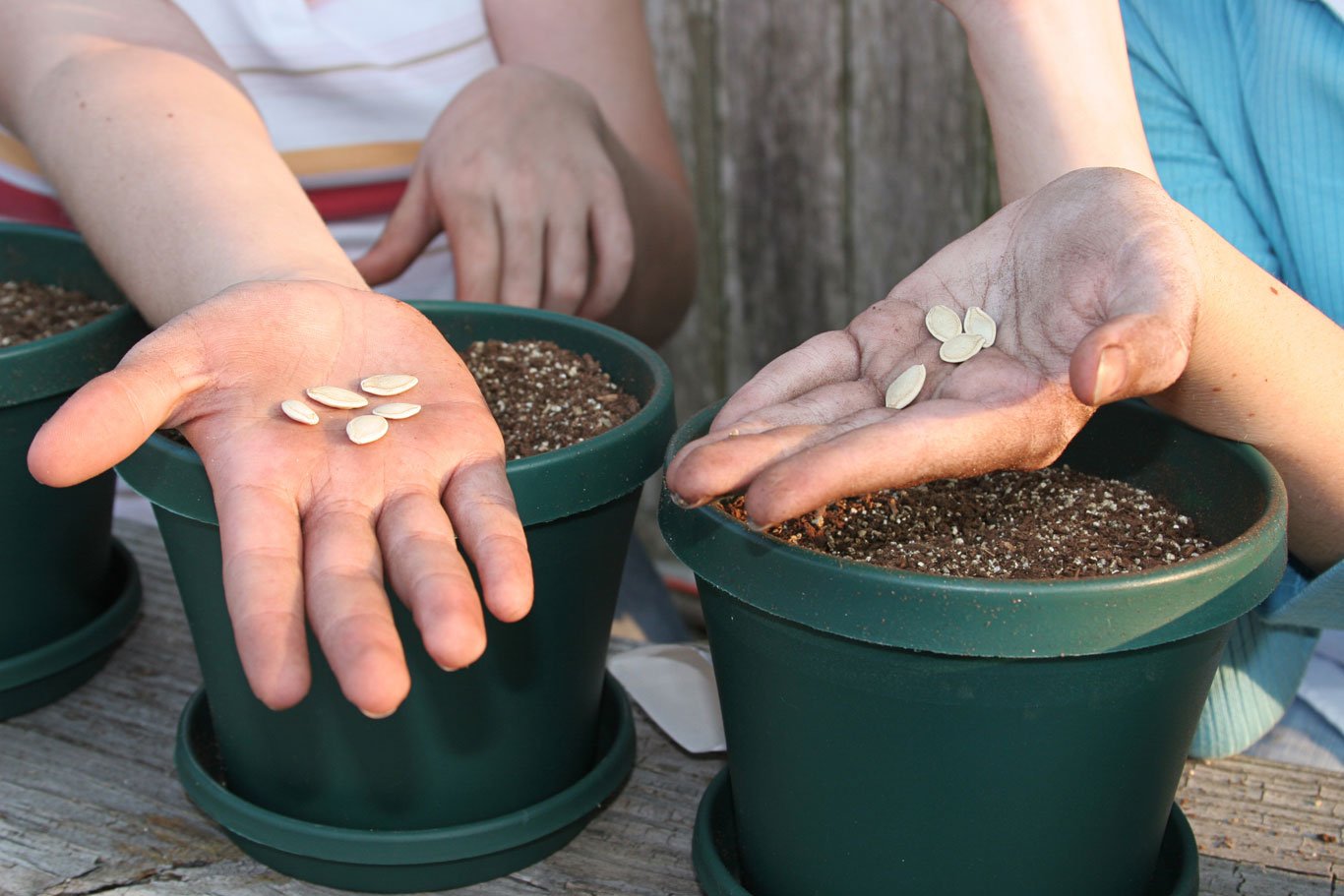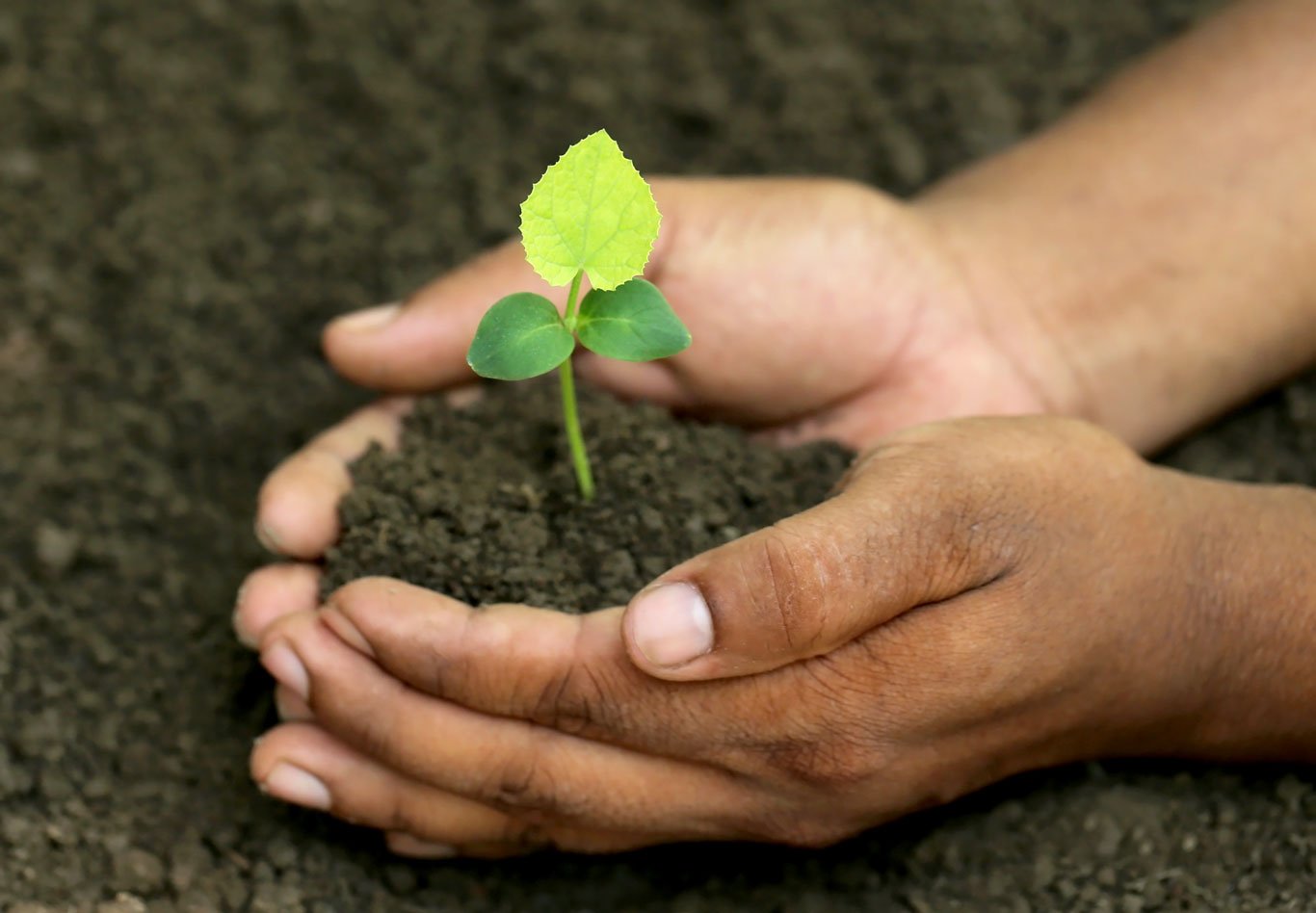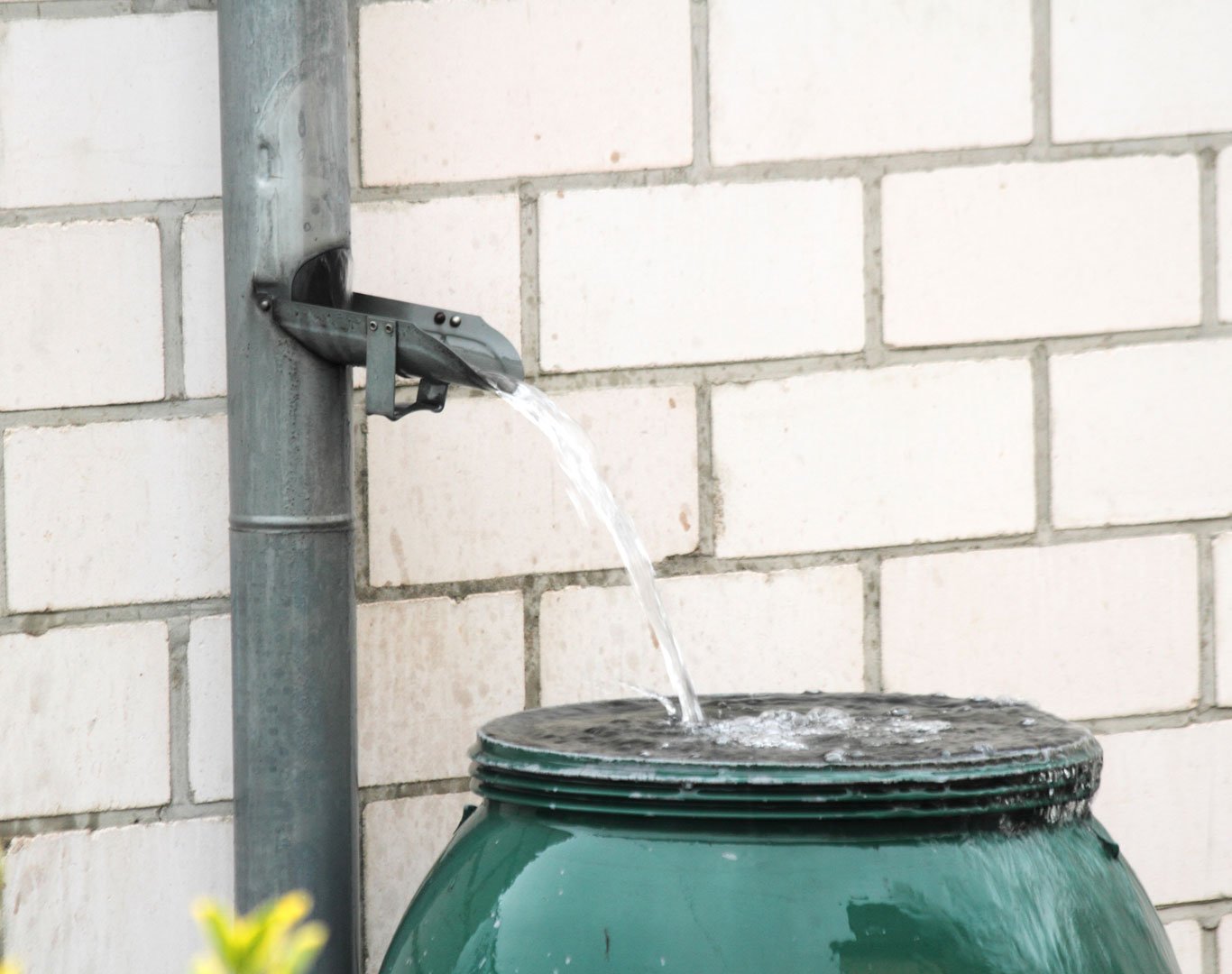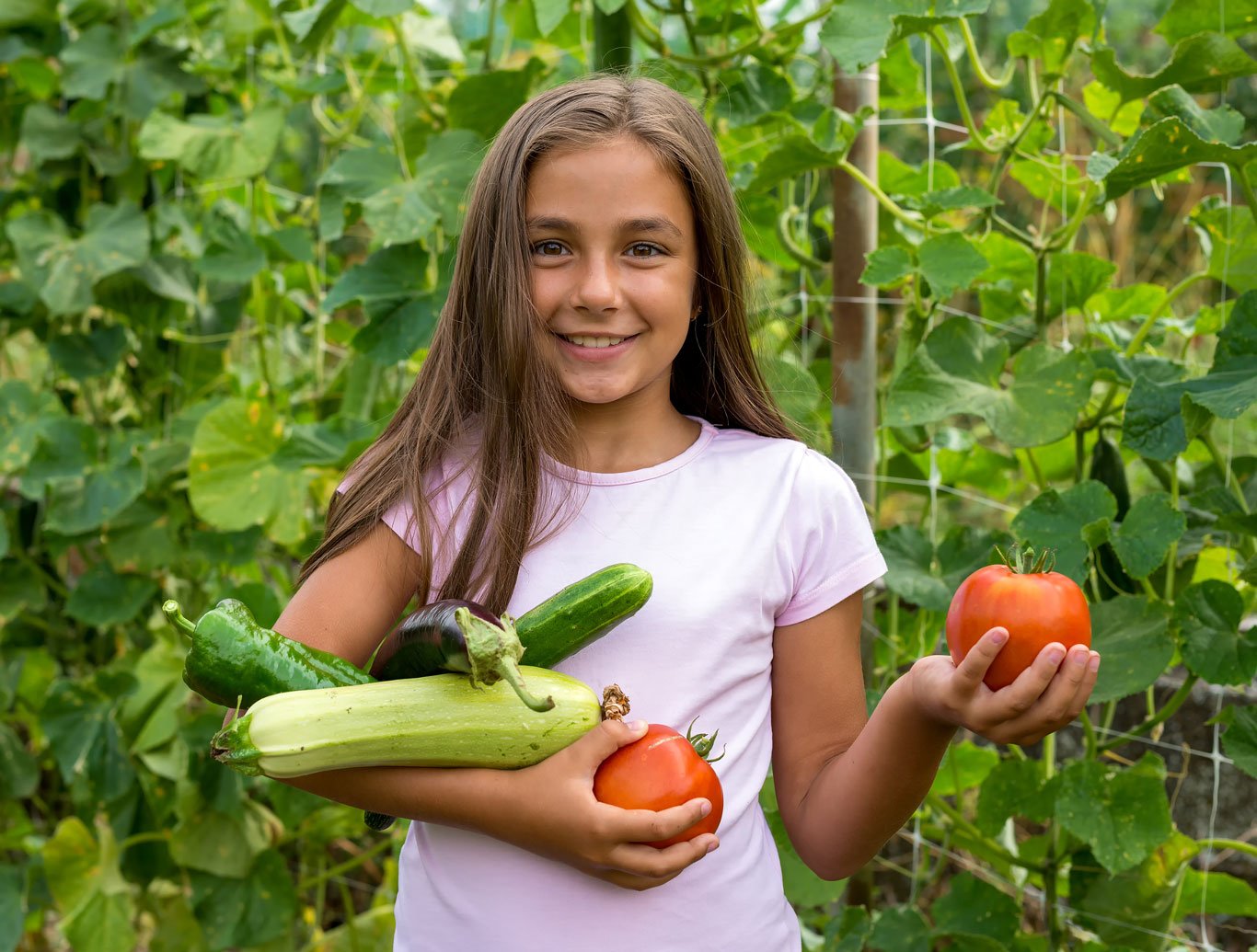Gardening. When you hear that word, do you immediately think of a flower, an herb, or a vegetable garden? Or maybe you’re familiar with a sensory or hydroponic garden? There’s a relatively long list of types of gardens, which can be a great lesson, but this week is National Gardening Week and June is Fresh Fruits and Veggies Month, so let’s focus on the traditional vegetable garden.
It’s becoming more common to hear of school programs that include planting and caring for a garden. Talk about hands on! No matter what grade level, students get a sense of accomplishment by planting seeds or plants, caring for them, and then harvesting the fruits and vegetables. Columbus, KS, is a great example. They recently installed a greenhouse, which enables the students to learn even more skills. Some schools then take it a step further by selling their produce to the community.
Fourth-graders at George Nettels Elementary School tend an annual garden. Each student gets a container to plant and label for easy identification.
Gardening Isn't Just for the Backyard Anymore
A natural direction you can take this subject is to teach the life cycle of plants, and how to care for them. But let’s dig a little deeper. My husband is a fourth-generation farmer, so our backyard garden is about the size of half a city block. He starts many plants from seed in a greenhouse, manages the crops, and then we sell the produce at area farmers markets. Granted, I’m the official weeder, but I help wherever it’s needed.

Our planning happens all year-round, and there’s a lot more to consider than picking out seeds. A good place to start is mapping your garden space. Why bother; you just need soil, water, and sun, right? Oh, but there’s so much more! Not every plant thrives in the same type of soil. If your school’s garden will be big, how will you transport water? Is there good drainage? Did you think about plant height and how the shade will affect surrounding rows? So many things to think about! Journaling can help with that.
The Dirt on Gardening
There’s a lot going on under the surface of soil, and some plants are very picky about which type of soil they need.

There are three main nutrients you need in your soil: nitrogen, phosphorus, and potassium (also known as NPK). Nitrogen is a major component of chlorophyll, so it supports leaf growth. Phosphorous aides the growth of roots, seeds, fruit, and flowers. Potassium enables the plant to grow fast and develop strong stems. By adding fertilizer regularly, you’ll infuse the soil with a new supply of these nutrients to ensure the best crop possible (University of Illinois Extension).
Not all plants like the same ratio of NPK, and having too much of one of the nutrients can cause unexpected results. For instance, if you give tomatoes too much nitrogen and not enough phosphorus, they produce a lot of leaves, but little to no fruit. Tomatoes like an equal balance of nutrients. Although, if you have to be high in one nutrient, hopefully it’s phosphorus for flowering. On the other hand, some plants, such as legumes, actually feed nitrogen back into the soil, which is why it isn’t a good idea to always plant the same types of plants in the same area year after year.
There are a lot of good resources about soil and gardening, and one is your local university extension office. They usually have informative materials to share and love to work with schools on special programs for your students. The University of Illinois Extension dedicates part of their website to showing the basics of gardening.

Another soil consideration is the pH level, which is measured on a scale of 0-14. The higher the number, the less acidic the soil is. Although mapping for our garden changes every year, we have some general areas that we keep for certain veggies. Most vegetables like a a pH of 6 to 7, which is slightly acidic to neutral. We have a designated area for potatoes that like an acidic pH of 4.5-6, and asparagus likes a pH of 6-8.
To work out the NPK and pH in your school’s garden, you can test the soil. One method is to use a soil tester that probes the soil and uses a meter to show measurements, but depending on the equipment used, the results can be unreliable. For accurate results, consider using a soil test kit, which is like a mini chemistry set that uses solutions to measure pH and NPK. This process takes a little longer but is more reliable. If funding permits, you can send soil samples to a lab for analysis for the best results.
Sunshine All Around
Sunshine is the least complicated of soil, water, and sun. Be aware of the plants that need full sun and those that could use a little shade. You might want to put your tall plants along the north side of your garden, depending on your location.
We plant sunflowers next to our tomatoes for some afternoon shade, because we have such hot summers in Kansas. This enables the tomatoes to stay cooler and produce more fruit. Plants can get sunburned or overheated; an indicator is yellow spots on the leaves or fruit.
You can also make artificial shade by using limbs and sheets or by sticking cut brush in soil where needed. Depending on the size of your garden, you might try a canopy that can be added or removed easily.
Rain is a Good Thing
The weather plays a big part in watering, and if you need to water in between rain showers, a collection barrel is one way to show conservation to students. A coworker of mine used his imagination to create a two-barrel system for overflow with a spigot since he didn’t have a hydrant or other water supply close by.

If you’re using water from a tap, make sure it’s not too high in certain minerals or chemicals that can have a negative effect on plants. Our okra suffered one extremely dry year after our cistern ran dry. Our tap water is high in chlorine, and the okra accumulated too much of the chemical in the leaves, making them look burned.
You don’t want water that’s too hard or soft. Salt, like that used in water softeners, is harmful to plants. Hard water has magnesium, which makes it hard for plants to absorb calcium. Both are a problem only in excess. But if your plants are looking stunted and dark colored, your water might be the culprit.
Harvesting Knowledge
So, you’ve tested the soil, know where your shade is going to be, and have your water figured out. Your students will have a blast planting – maybe not so much fun weeding – but will have plenty of good times harvesting. And there are lessons for all grade levels with opportunities for local gardeners to share their knowledge.

Think of all the concepts you can teach your students throughout the gardening process. And we haven’t even delved into harvesting, marketing, selling, collecting seeds, and composting. The lesson options go on and on. Don’t have room for a garden at school? Is there a community garden near you that could use volunteers? What about mentoring? You could find a club or a member of your community that can give you tips such as what’s native or does best in your area.
If you don’t have any of the resources mentioned, take a look at The Old Farmer’s Almanac. It’s more than weather, and the guides to plants give you details to help with your planning.
We’d love to hear about your school’s garden program, no matter if it’s just beginning or been around for a while. Share your experience or ideas by commenting or tag us on social media (@pitscoed).
Happy gardening!
TOPICS: BEYOND THE CLASSROOM, IDEAS & INSPIRATION, Collaborations, Science, STEM, Social and emotional learning, Activities, 21st Century Skills



